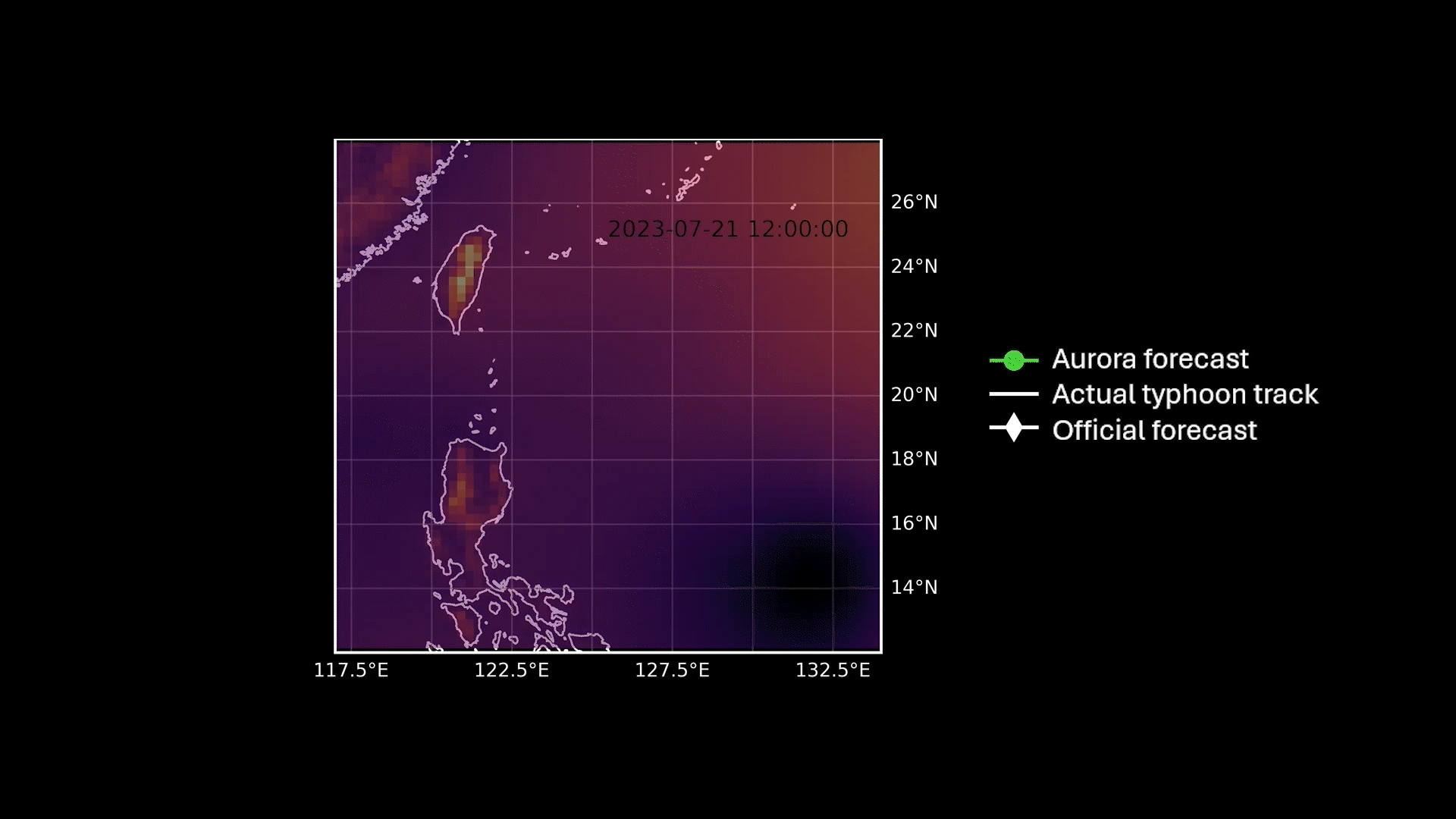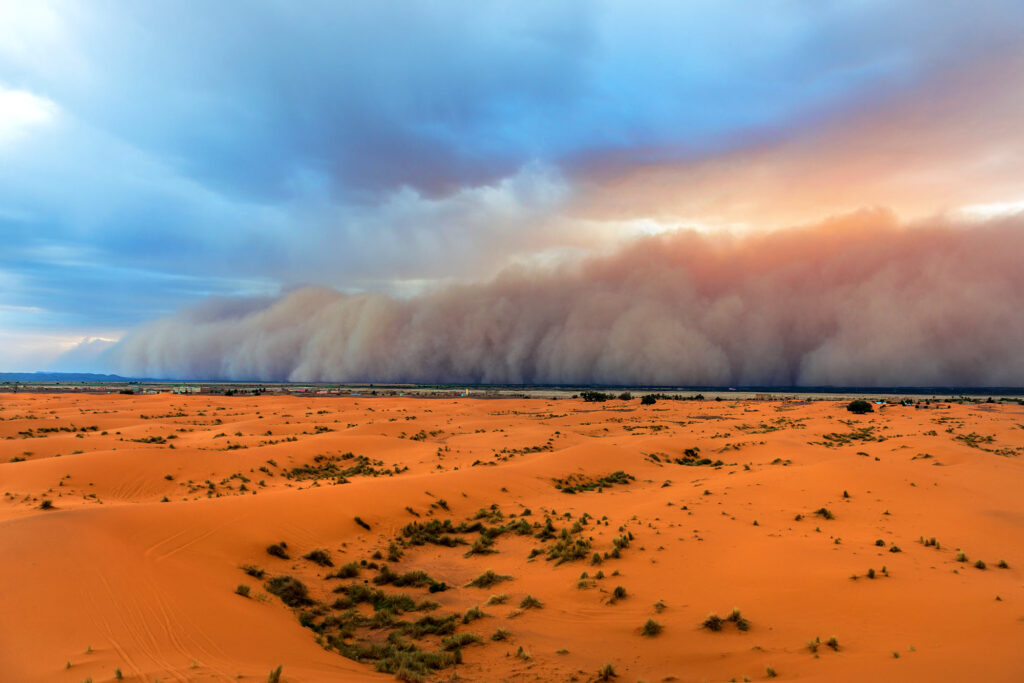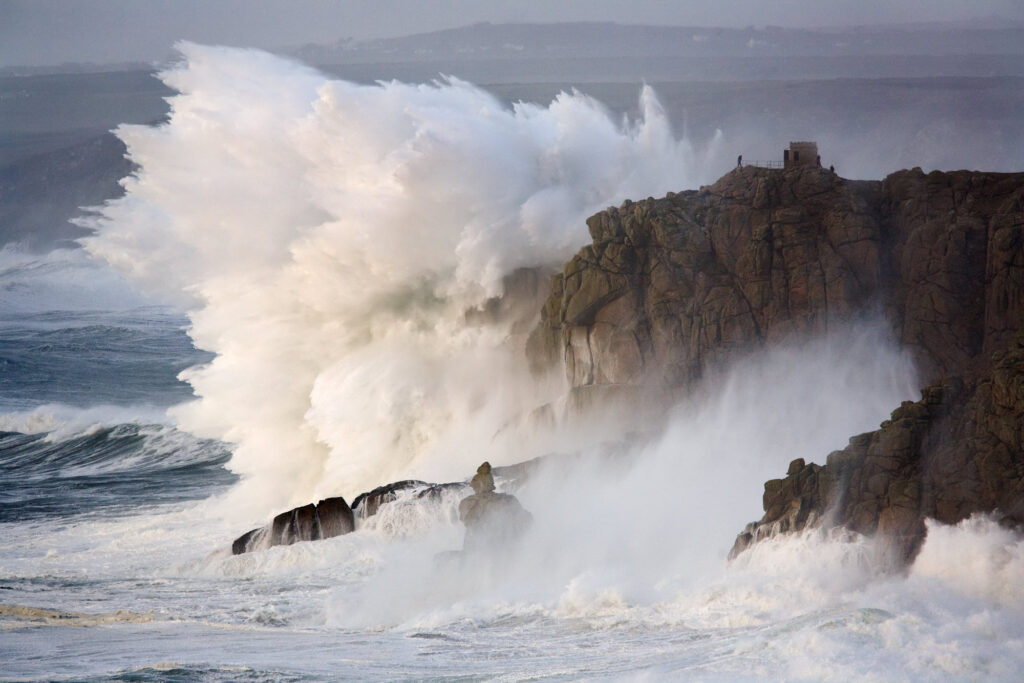Microsoft’s Aurora AI foundation model goes beyond weather forecasting
作者:Written by Sally Beatty
Destructive hurricanes. Huge ocean waves. Sandstorms and severe smog.
Extreme weather events are becoming increasingly common, piling pressure on communities to prepare for a range of disasters with the potential to not only take lives and damage homes, but upend power grids, destroy crops and disrupt shipping routes.
While a growing number of powerful new AI models provide new tools to help better anticipate the weather, a new paper published in Nature explains how a foundation model, known as Aurora, leverages the latest advances in AI to more accurately predict not just the weather, but a wide range of environmental events in a series of retrospective analyses — from hurricanes and typhoons to air quality and ocean waves. Developed by Microsoft Research, Aurora also forecasts this range of atmospheric events with greater precision and speed and at much lower computational cost when compared to traditional numerical forecasting and previous AI approaches.
A foundation model is a large-scale AI model trained on a wide variety of data. Aurora is unique in that it is not limited to AI weather forecasting — that is just one of the things it does at a state-of-the-art level. What sets Aurora apart is that it is originally trained as a foundation model and can then be specialized through finetuning to go beyond what is considered traditional weather forecasting, such as air pollution prediction. Over the course of Aurora’s development, researchers have been able to finetune the model to a variety of forecasting capabilities, including prediction of ocean waves and tropical cyclones, demonstrating its capability as a foundation model for the Earth system rather than just a foundation model for the atmosphere.

Aurora first learns how to generate forecasts in just seconds through training on general weather patterns from over one million hours of data derived from satellites, radar and weather stations, simulations and forecasts. Microsoft researchers believe it is the largest collection of atmospheric data ever assembled to train an AI forecasting model. Taking advantage of its unique flexible architecture, Aurora is then “fine-turned” to perform a variety of specific tasks such as predicting wave height or air quality, using modest amounts of additional data.
To forecast weather and other environmental events, Aurora draws on the power of its size and training with vast amounts of diverse data. This helps Aurora beat existing numerical and AI models across 91 percent of forecasting targets when fine-tuned to medium-range weather forecasts at a resolution of .25 degrees, the researchers reported in Nature. Medium-range weather forecasts, which people rely on in weather apps, typically reflect an outlook of up to 14 days.
Incorporating many diverse sources of data results in “not only greater accuracy in general, but it also means we are better at forecasting extreme events,” says Megan Stanley, a senior researcher with Microsoft Research who was part of the core Aurora project team.
To help advance the field of atmospheric forecasting, Microsoft has made Aurora’s source code and model weights publicly available, allowing developers to download and run or build on Aurora to drive further innovation.
Aurora is also featured on Azure AI Foundry Labs, a hub for the latest AI research and experiments at Microsoft, where developers and creators across industries can discover new possibilities, solve complex problems, and share insights to shape the future of AI.
Microsoft’s MSN Weather is also now incorporating Aurora’s advanced AI modeling. The MSN Weather team developed a specialized version of the model capable of producing hourly forecasts and adding more weather parameters, including precipitation and clouds, to provide even more accurate and up-to-date forecasts and help users stay ahead of the weather.
Anticipating cyclones with greater accuracy
When Typhoon Doksuri made landfall in the Philippines in July 2023, it caused significant devastation, including widespread flooding and power outages.

As reported in Nature, in testing Aurora accurately predicted Typhoon Doksuri’s landfall in the Philippines four days in advance of the actual event. Official predictions mistakenly placed the storm off the coast of Northern Taiwan.
In this latest research, Aurora also beat the National Hurricane Center in forecasting 5-day tropical cyclone tracks, a first for a machine-learning model. In a major achievement, it also outperformed seven major forecasting centers on all cyclone track forecasts for the 2022-2023 season globally, the researchers found.
The accuracy of Aurora’s cyclone track forecasts underscores the importance of initial training on huge stores of diverse data.
Predicting air quality at a fraction of the cost of traditional methods
On June 13, 2022, a devastating sandstorm slammed Iraq, one of ten similar storms that hit the country that year, caused by a combination of intense droughts, soil degradation and high temperatures. The storm blanketed the capital, Baghdad, and nearby areas with thick clouds of dust, sending thousands of people to the hospital with breathing difficulties. The local airport was also forced to close.
In another case study featured in the Nature paper, Aurora accurately predicted the Iraq sandstorm, one day in advance, at a fraction of the cost it takes to run a traditional air quality forecast. And it achieved this despite air quality data being relatively limited compared to weather data. Because the model first learns from a large and diverse set of data, it can be fine-tuned with smaller amounts of air quality data.

Predicting air quality at this scale is much more complicated and resource-intensive than predicting the weather, the researchers said. That’s because forecasting air quality involves modeling complex chemical reactions and considering various levels of global emissions caused by human activity.
Aurora “didn’t learn anything about atmospheric chemistry, or how nitrogen dioxide, for instance, interacts with sunlight — that wasn’t part of the original training,” says Stanley. “And yet, in fine tuning, Aurora was able to adapt to that, because it had already learned enough about all of the other processes.”
More precision leads to better wave forecasts
Aurora now also excels at predicting ocean wave details – including height and direction – by perceiving intricate wave patterns in greater detail. That makes it ideal for predicting the progression of oceanic events such as Typhoon Nanmadol, which made landfall in Japan in September 2022 and was the most intense typhoon of that year, bringing record-breaking landslides and flooding caused by extreme amounts of rain. Power outages were widespread and occurred as far away as South Korea.
In another test, Aurora matched or exceeded existing forecasts for wave activity in 86 percent of comparisons over a whole test year compared to the current standard for predicting wave activity. In doing so it was able to predict wave heights generated by typhoons such as Nanmadol with an accuracy that exceeds the current best forecasting models.

Aurora’s performance was especially notable because data needed to train the model to forecast waves was only available from 2016, a short period of time for such a complex task, researchers noted. This is another indication of Aurora’s ability to generate impressive forecasts with little additional fine-tuning data.
Speed and accuracy
To make sense of large amounts of data drawn from multiple sources, Aurora relies on a flexible “encoder architecture,” which translates raw data and converts it into a standard form the model can use to make predictions.
Researchers were careful not to over-prescribe how Aurora operates, another factor believed to help explain its accuracy and precision. “We’re not putting in strict rules about how we think variables should interact with each other,” says Stanley. “We’re just giving a large deep-learning model the option to learn whatever is most useful. This is the power of deep learning in these kind of simulation problems.”
Although the initial training of Aurora is costly, its operational expenses are significantly lower than those of traditional weather prediction systems once it is fully functional, the authors wrote in Nature.
Drawing on high-bandwidth model graphics processing units (GPUs), Aurora generates forecasts in seconds, approximately 5,000 times faster than traditional systems, which require hours on large supercomputers to generate comparable predictions.
Predicting what’s next for Aurora
Aurora’s early results have stirred interest across academia and industry, including forecasting organizations, energy companies and even commodity traders. There is particular interest in seeing how it can be adapted to better predict rain, enhance crop logistics and protect energy grids. Aurora is also accessible to researchers, meteorologists, and other professionals involved in atmospheric science and weather forecasting on the web site of the European Centre for Medium-Range Weather Forecasts (ECMWF), one of the world’s most widely used weather forecasting systems.
Microsoft machine learning researcher and Aurora team member Wessel Bruinsma notes each fine-tuning experiment took a small team of engineers only about 4-8 weeks to execute. “Compare this timeline to the development of traditional numerical models, which typically takes multiple years,” he says.
“It’s got the potential to have huge impact because people can really fine tune it to whatever task is relevant to them,” says Stanley, “whether that’s very localized, high resolution, or flood modelling for instance, particularly in countries which are underserved by other weather forecasting capabilities.”
Stanley believes Aurora, and what comes next, will complement current forecasting systems, not replace them. “There is a lot of interesting research to be done around how well it is learning the physics, and if it is learning the physics correctly then it means this is something that should be robust enough to make predictions in different climatic settings. It’s the first of its kind,” adds Stanley. “But it doesn’t mean it will be the last.”
Related links:
Read more: A foundation model for the Earth system
Listen more: Abstracts: Aurora with Megan Stanley and Wessel Bruinsma
Read more: Project Aurora: The first large scale foundation model of the atmosphere
Read more: Aurora Forecasting: A flexible 3D foundation model of the atmosphere
Photos from Getty Images, from top to bottom: Frank Ramspott / E+ / onurdongel / E+ / Pavliha / E+ / David Clapp / Stone.
关于《Microsoft’s Aurora AI foundation model goes beyond weather forecasting》的评论
暂无评论
